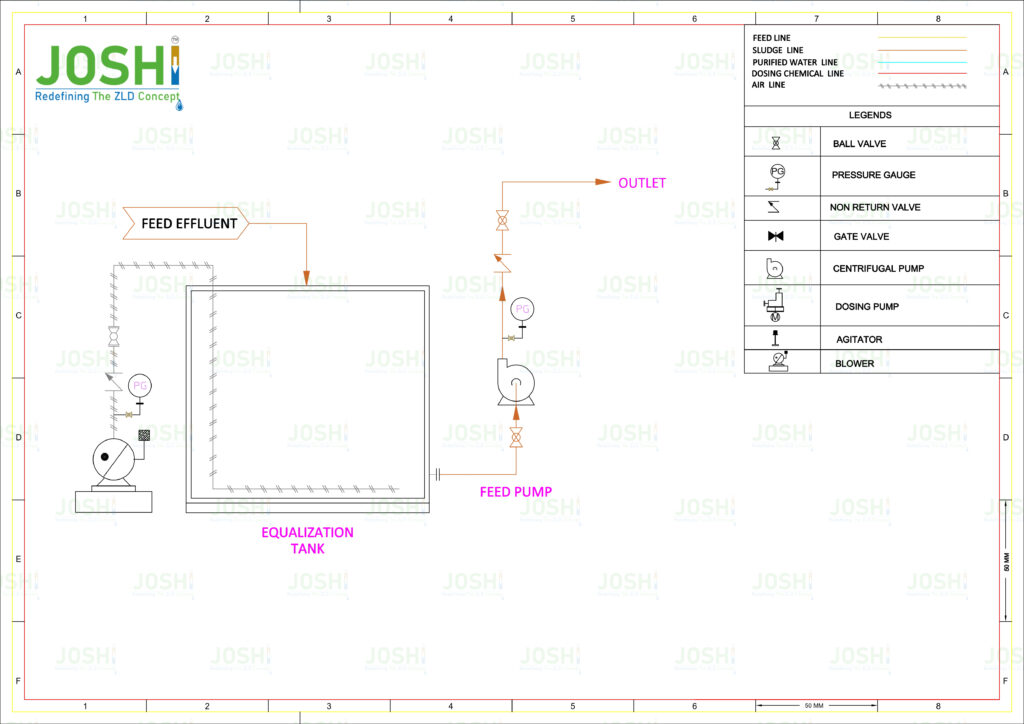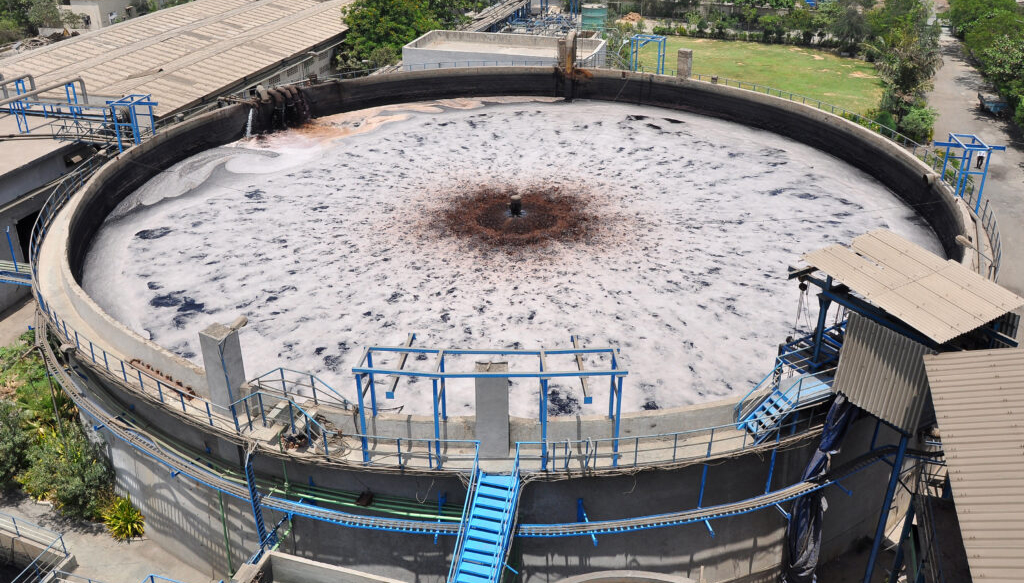Equalization Tank
An equalization tank, also known as an equalization basin or balancing tank, is a component of wastewater treatment plants designed to regulate and balance the flow rate and characteristics of incoming wastewater. It acts as a buffer or storage reservoir to mitigate fluctuations in wastewater volume, flow rate, and pollutant load.
Process Steps & Key Functions
Flow Equalization : The equalization tank evens out the flow rate by storing excess wastewater during periods of high flow and releasing it during periods of low flow. This helps prevent hydraulic overloading of downstream treatment units, ensuring stable and consistent process conditions.
Load Equalization : In addition to flow, the equalization tank also equalizes the pollutant load or concentration of wastewater. It helps to smooth out variations in organic and inorganic compounds, nutrients, and other contaminants, allowing for more effective treatment downstream.
Shock Absorption : The equalization tank serves as a buffer against sudden spikes or shocks in wastewater composition or flow rate. It helps to protect sensitive treatment units, such as biological processes, from the adverse effects of sudden changes in pollutant load or toxicity.
Process Optimization : By providing a more consistent and uniform influent to the treatment system, the equalization tank allows for better process control, improved treatment efficiency, and enhanced removal of pollutants. It helps optimize the performance of downstream treatment units, such as activated sludge processes, clarifiers, or filters.
Design Features:
Equalization tanks can vary in size and design depending on the specific needs and characteristics of the wastewater treatment plant. They are typically equipped with inlet and outlet structures, level controls, and mixing systems to ensure proper operation and efficient blending of incoming wastewater.
Significance
The primary purpose of an equalization tank is to equalize the variations in wastewater characteristics and hydraulic loading, ensuring a more consistent and manageable influent stream to downstream treatment processes. It helps to protect the treatment system from shocks, surges, and overloading that can negatively impact the efficiency and effectiveness of the overall wastewater treatment process.







